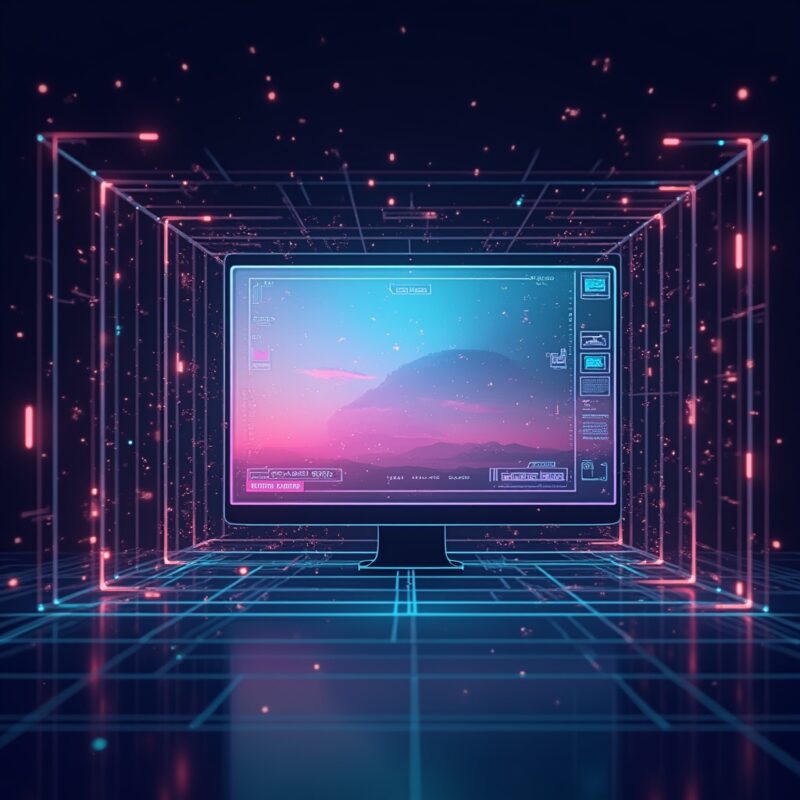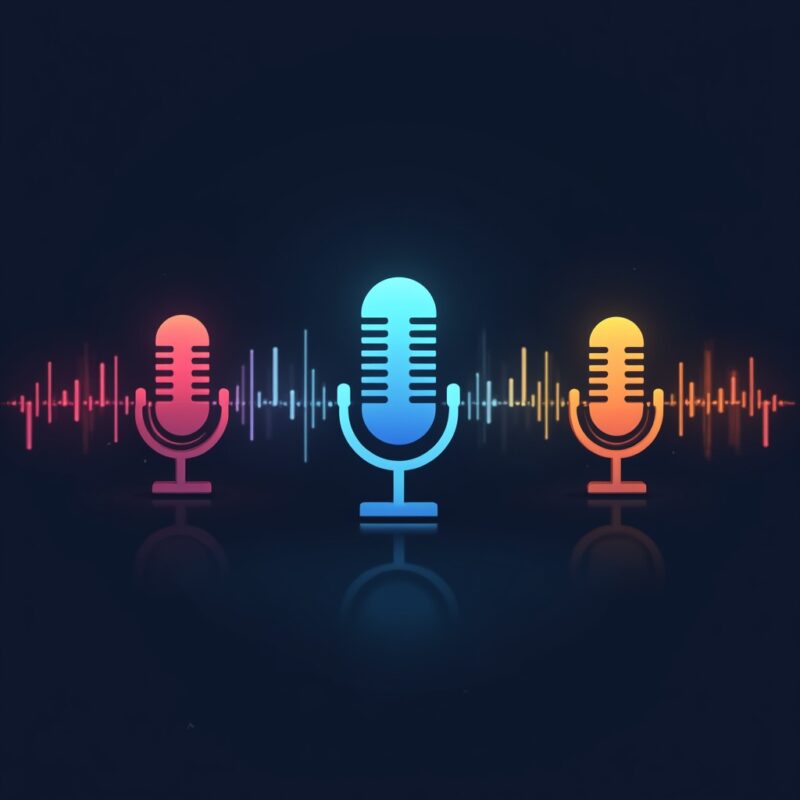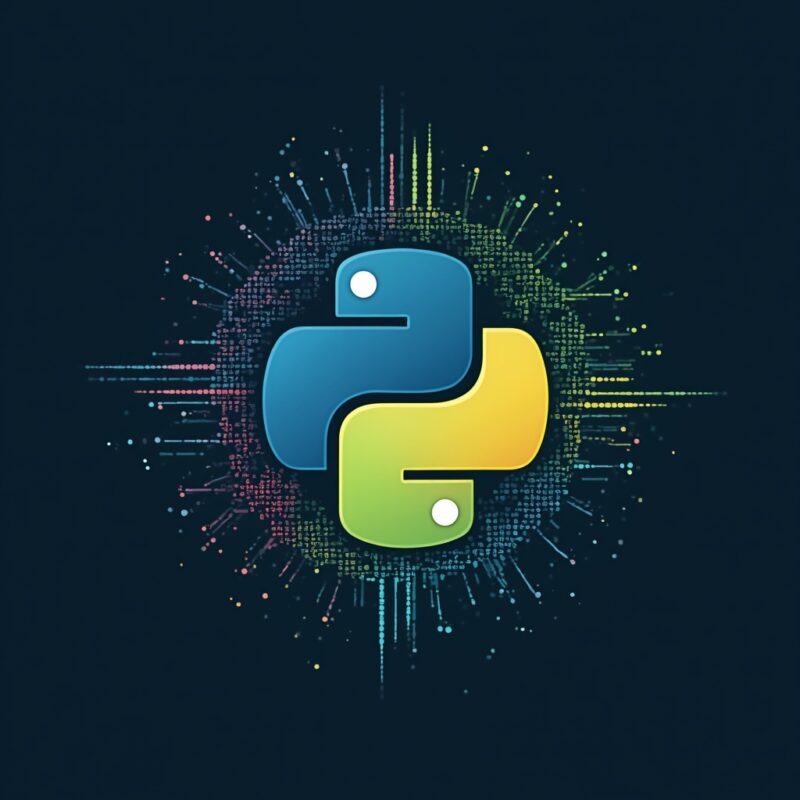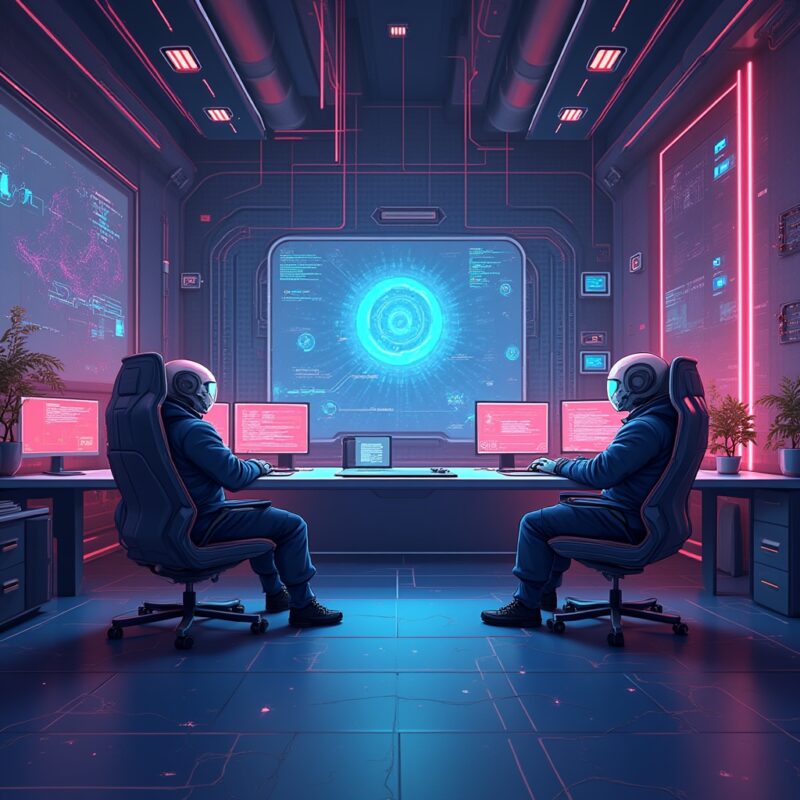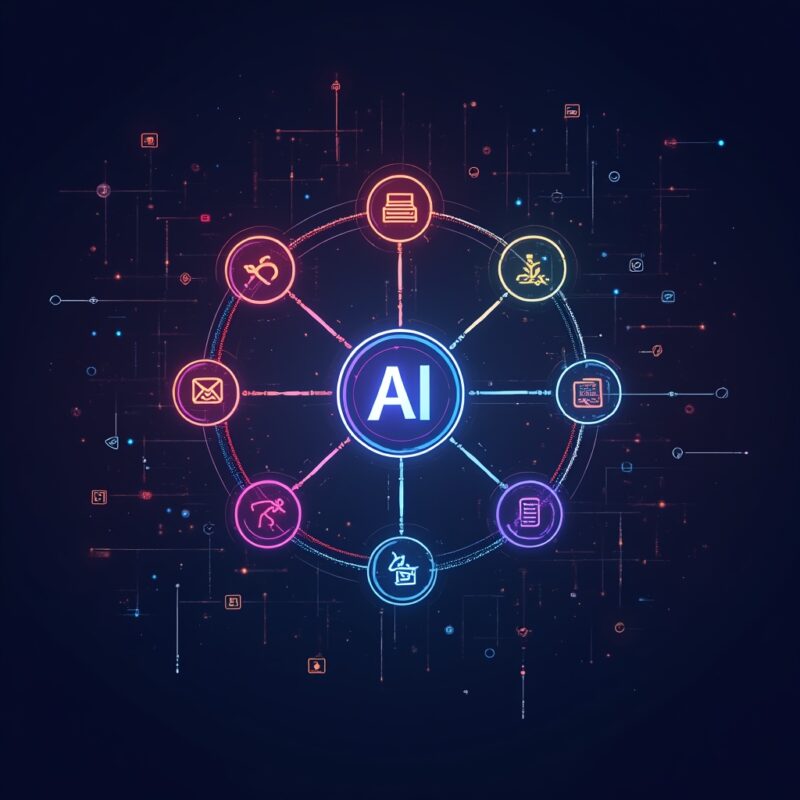Cool AI Websites: 12 Incredible Platforms to Explore

Discover 12 mind-blowing AI websites that showcase cutting-edge artificial intelligence applications. From image generators to conversational AI and creative tools, these platforms demonstrate how AI is transforming education, creativity, and problem-solving in accessible, interactive ways.
The Wild, Wonderful World of AI Websites
So there I was at 2 AM, doom-scrolling through my phone for the billionth time, when I stumbled across an AI website that literally made me gasp out loud. Not the polite kind of gasp either—the kind that wakes up your cat who then gives you that “seriously, human?” look. The AI had created poetry that actually made me feel things. Real, human things! From a machine!
That’s the thing about cool AI websites—they sneak up on you and suddenly you’re questioning everything you thought you knew about technology, creativity, and maybe even what it means to be human. One minute you’re casually exploring, and the next you’re down an existential rabbit hole wondering if robots will eventually write better birthday cards than you do.
And I’m not the only one fascinated by these digital wonders. The search for innovative AI platforms has exploded as people realize these aren’t just nerdy tech toys—they’re powerful tools that are changing how we learn, create, and solve problems. Let’s break it down…
What Makes an AI Website “Cool” Anyway?
Not all AI websites are created equal. The truly cool ones combine cutting-edge technology with an interface that doesn’t require a computer science degree to navigate. They solve real problems or create genuine moments of wonder.
The most impressive AI websites share these characteristics:
- Accessibility – They make complex AI technology usable for everyday folks
- Interactivity – They respond to your input in meaningful, sometimes surprising ways
- Uniqueness – They accomplish something that feels magical or impossible
- Educational value – They help you understand AI concepts while using them
Whether you’re a curious beginner or a seasoned tech enthusiast, these 12 platforms offer something that’ll make you say “whoa” (and possibly keep you up until sunrise experimenting).
12 Mind-Blowing AI Websites You Need to Explore
1. DALL-E by OpenAI
Remember when we used to be impressed by Microsoft Paint? DALL-E makes that look like cave drawings. This image generation platform creates stunning, sometimes bizarre visual art based on text descriptions. Type “astronaut riding a horse on Mars in watercolor style,” and boom—it delivers exactly that.
What makes it truly special is how it understands context, style, and composition. The latest version has become remarkably good at understanding nuance, spatial relationships, and even rendering text within images (though it still hilariously messes up sometimes, which is honestly part of teh charm).
2. Midjourney
If DALL-E is the approachable mainstream artist, Midjourney is its slightly edgier, fine-arts-degree-holding cousin. This image generation platform creates stunningly detailed, often surreal artwork that frequently passes for professional illustrations.
The platform operates primarily through Discord and has developed a passionate community of users who share prompts, techniques, and jaw-dropping results. Its aesthetics lean toward the painterly and cinematic, often producing images with dramatic lighting and composition.
3. ChatGPT
Unless you’ve been living under a digital rock, you’ve heard of ChatGPT. This conversational AI from OpenAI has become the poster child for accessible artificial intelligence. What makes it cool isn’t just its ability to answer questions—it’s how it can explain complex concepts, draft content, debug code, or even role-play scenarios to help you learn.
For students and educators, it’s become an invaluable tool for exploring ideas, getting unstuck on assignments, and seeing information presented in different ways. The true power comes when you learn to craft effective prompts—it’s like having a conversation with the world’s knowledge base.
4. Runway ML
Runway is what happens when AI meets professional creative tools. This platform offers video generation, editing, and visual effects powered by machine learning. The magic moment comes when you realize you can remove objects from videos, extend scenes, or even generate entirely new footage from text descriptions.
For educators teaching digital media, it’s a revolutionary tool that puts previously high-end production capabilities into student hands. The learning curve is steeper than some other platforms, but the results can be truly cinematic.
Learn more in
AI to Edit Videos: 7 Tools That Transform Footage Instantl
.
5. Google’s Bard
Google’s answer to ChatGPT brings the search giant’s vast knowledge graph to conversational AI. Bard stands out for its ability to incorporate recent information and cite sources (though it’s not perfect). It excels at summarizing complex topics and generating creative content.
For students researching topics, Bard offers a more structured approach than some alternatives, often providing multiple perspectives on questions. The interface is clean and intuitive, making it accessible for users of all ages.
6. Hugging Face
Don’t let the adorable name fool you—Hugging Face is AI’s Swiss Army knife. This platform hosts thousands of open-source machine learning models that anyone can use. Want to analyze sentiment in text? Translate languages? Generate images? There’s a model for that.
What makes Hugging Face particularly valuable for education is its transparency. You can see exactly how models work, experiment with different parameters, and even contribute to ongoing research. It’s like having access to an AI laboratory where everything is explained.
7. Soundraw
Creating original music used to require years of training or expensive software. Soundraw changes that equation by generating custom music tracks based on your preferences for mood, genre, and length. The results are surprisingly professional and copyright-free.
For students creating videos or presentations, this solves the perpetual problem of finding suitable background music. The interface is wonderfully intuitive—just select a few parameters and watch as it composes original tracks in seconds.
8. Luma AI
Luma Labs’ platform turns 2D images into 3D objects and scenes with almost magical ease. Upload a photo of an object, and it generates a 3D model you can rotate, modify, and use in various applications. For teaching spatial concepts or designing virtual environments, it’s a game-changer.
The platform’s “Dream 3D” feature is particularly impressive, creating detailed 3D scenes from text descriptions. Imagine typing “underwater treasure chest with bubbles” and getting a fully realized 3D environment—that’s Luma’s magic.
9. DeepL Translator
Translation tools aren’t new, but DeepL has raised the bar significantly. This AI-powered translator captures nuance, idioms, and context in ways that make older translation tools look primitive. It currently supports 29 languages and often preserves the tone and style of the original text.
For language education, it offers a fascinating tool for comparing translations and understanding subtle differences between languages. The free version is generous, making it accessible for students and teachers alike.
10. Synthesia
Creating professional-looking video presentations typically requires equipment, editing skills, and on-camera confidence. Synthesia bypasses all that by generating video presentations with AI avatars that speak your script in a natural-sounding voice.
For educators creating instructional content, it offers a time-saving alternative to traditional video production. The avatars are still clearly synthetic but have improved dramatically, with natural gestures and expressions that avoid the uncanny valley effect.
11. Pictory
Pictory transforms text into engaging videos automatically. Paste an article or script, and it selects relevant visuals, adds captions, and structures the content into a coherent video presentation. It’s like having a video editor who works at lightning speed.
For summarizing complex topics or turning written content into more engaging formats, Pictory offers a streamlined workflow that students and teachers can master quickly. The platform includes stock footage, music, and voice-over options to customize the final product.
12. Jasper AI
Jasper is an AI writing assistant that goes beyond basic text generation. It can adapt to different writing styles, formats, and tones while maintaining coherence across longer pieces. Unlike some AI writers that produce generic content, Jasper can help develop a distinctive voice.
For students learning writing skills, it serves as both coach and collaborator, suggesting improvements and alternatives without taking over the entire process. The platform includes templates for different content types, making it easier to structure essays, reports, or creative pieces.
Learn more in
AI Free Website Builders: Create Professional Sites Instan
.
Why These AI Websites Matter for Education
These aren’t just cool toys—they’re changing how we teach and learn in fundamental ways. The educational implications are massive:
- Democratized creativity – Tools like DALL-E and Midjourney put professional-quality creation in anyone’s hands
- Personalized learning – AI assistants can adapt explanations to individual learning styles
- Rapid prototyping – Students can quickly test and iterate on ideas without technical limitations
- Accessibility – These tools can help learners with different abilities access and create content
The most forward-thinking educators aren’t asking whether to use these tools—they’re figuring out how to integrate them meaningfully while teaching students to use them ethically and effectively.
Getting Started: Tips for AI Website Exploration
Ready to dive into these AI wonders? Here are some practical tips to make your exploration more productive:
- Start with the free versions—most offer substantial capabilities without payment
- Join online communities (Reddit, Discord) where users share prompts and techniques
- Experiment with detailed prompts—specificity usually yields better results
- Compare outputs from different platforms for the same request
- Keep a “prompt journal” of what works and what doesn’t
Remember that these tools are constantly evolving. Something that didn’t work well last month might produce amazing results today. The learning curve can be surprisingly gentle—most are designed with non-technical users in mind.
The Human Element: Using AI Wisely
With all this technological wonder, it’s easy to get carried away. But the most valuable approach combines AI capabilities with human judgment. These tools work best when they enhance human creativity and problem-solving rather than replacing it.
For students especially, learning when to use AI (and when not to) is becoming an essential digital literacy skill. The goal isn’t to outsource thinking but to elevate it—using AI to handle routine tasks while humans focus on meaning, ethics, and creative direction.
So go ahead and explore these incredible platforms. Be amazed, be inspired, and occasionally be humbled when they produce something unexpectedly brilliant. Just remember that the most powerful tool is still the one between your ears—these AI websites are just really, really cool extensions of human ingenuity.
What’s Next for AI Websites?
The pace of innovation is breathtaking. By the time you’re reading this, there are probably new AI capabilities that make today’s “cool” seem ordinary. We’re likely to see more multimodal AI (combining text, image, video, and sound), more personalized experiences, and increasingly seamless integration into everyday tools.
The educational possibilities are particularly exciting—imagine AI tutors that adapt precisely to your learning style, or creative assistants that help you develop your unique voice rather than generating generic content.
Whatever comes next, one thing’s certain—we’re just at the beginning of this journey. The websites that make us gasp today will seem quaint tomorrow, but they’re opening doors to new ways of learning, creating, and solving problems that will transform education forever.


